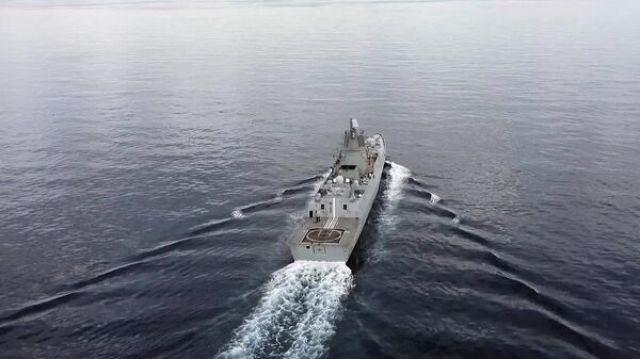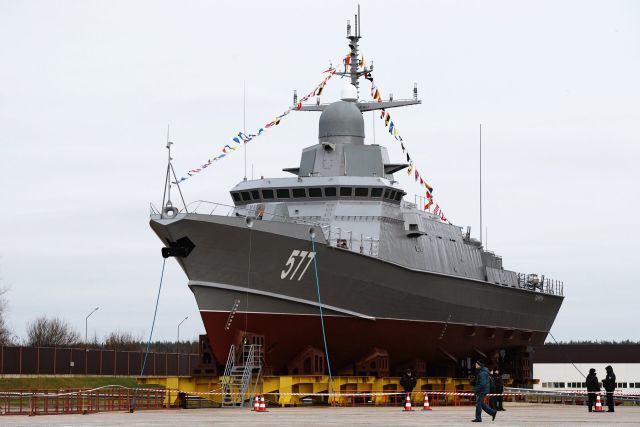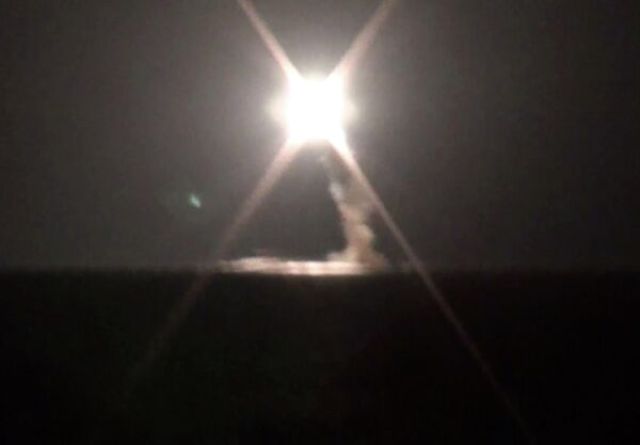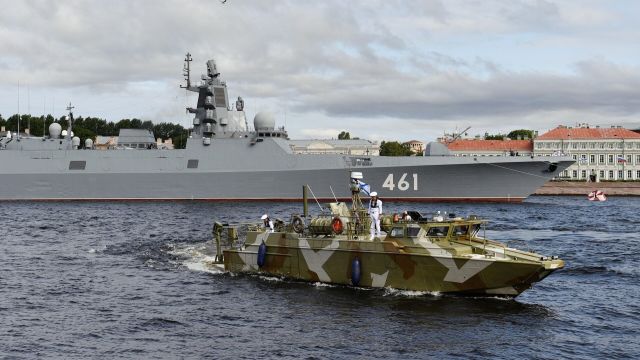MOSCOW, June 28 — RIA Novosti, Andrey Kotz. All new frigates and corvettes will be armed with "Zircons", the commander-in-chief of the Navy, Admiral Nikolai Evmenov, said the other day. The hypersonic anti-ship complex entered the army quite recently. About what the flotilla will become — in the material of RIA Novosti.
A volley of 48 missiles
The Ministry of Defense has high hopes for Zircon. Most of the tactical and technical characteristics of the cruise missile are classified. But something is known. The speed is a record, more than ten thousand kilometers per hour, or about nine Mach. The range is a thousand kilometers. The altitude on the marching section is 30-40 kilometers, where air resistance is low. The mass of the warhead is about 450 kilograms.
Ship-based SAMs of Western countries are designed for subsonic and supersonic speeds. But they are absolutely powerless before hypersound. The long range will allow the Russian fleet to destroy surface and ground targets with virtually impunity, without entering the affected area.
An important point: the "Zircon" is able to launch from the same launchers as the P-800 "Onyx" PKR, as well as the "Caliber". That is, it can be placed on ships of different displacement and purpose.
According to Evmenov, the frigates of project 22350 will become the regular carrier of the Zircons. Now the Navy has two such pennants — "Admiral Gorshkov" and "Admiral Kasatonov". Admiral Golovko is on the way. Everyone on board has a universal ship firing complex (UKSK) for 16 cells. If they are fully charged with "Zircons", these three vessels will be able to fire 48 missiles.

Frigate "Admiral of the Fleet of the Soviet Union Gorshkov" in the western part of the Atlantic Ocean. A frame from the video
Image source: © Press service of the Russian Ministry of Defense
Five more ships were laid down from 2013 to 2020. They are at different stages of construction.
These frigates with a total displacement of 5,400 tons are the most technologically advanced in the Navy. Almost all naval novelties were tested at the head — from radio-electronic equipment to anti-aircraft missile systems and artillery installations.
Management is exclusively digital. In fact, these are floating computers that are ready to perform many tasks almost without human intervention. The new on-board information and control system connects all equipment with a single network, and the radio-electronic complex of surface and underwater lighting allows the crew to detect the enemy at a considerable distance.
Tested in combat
As for the corvettes, the "Zircons" will be able to shoot pennants of project 20385. There are two such in the ranks — "Thundering" and "Agile". Four are being built.
This series is intended for the Pacific Fleet. Each is armed with a UKSK for eight cells. For self—defense and the fight against aerial targets - the anti-aircraft missile system "Redut" with a range of up to 150 kilometers. Artillery is represented by 100-millimeter A-190 guns, and anti-submarine weapons are represented by four 330-millimeter Kalibr-NK torpedo tubes.
In addition, there are modern radio—electronic and radio-technical weapons, satellite communications. Takes on board a multi-purpose Ka-27 helicopter. The superstructure is made using stealth technology, which reduces visibility on radars.

Small rocket ship "Typhoon" project 22800 before launching at the Leningrad shipbuilding plant "Pella". November 24, 2017
Image source: © RIA Novosti / Alexander Galperin
The corvette class also includes small rocket ships (MRCS) of projects 21631 "Buyan-M" (ten in service, two under construction), as well as 22800 "Karakurt" (four in service, ten under construction). Their eight-cell UCSCS are also suitable for "Zircons". These "babies" with a displacement of 950 tons have already hit targets in Syria and Ukraine with Kalibr cruise missiles.
Bet on speed
After modernization, the Admiral Nakhimov heavy nuclear missile cruiser will acquire hypersound. On submarines, these weapons will appear after 2025. The first full—time carrier is the Perm submarine of the 885M Yasen-M project with a 32-cell UCC.
However, large carriers are the exception rather than the rule. Judging by the list, the bet was made on relatively small ships. Powerful long-range weapons can neutralize the advantages of a potential enemy. For example, one hit below the waterline is enough to make the aircraft carrier list. For some time, it cannot receive and launch carrier-based aircraft.
In real combat conditions, "Zircons" have not yet been used. But supersonic has already been tested. So, according to the Ministry of Defense, supersonic "Onyx" hit the AFU facility in Odessa in early June. That is, in fact, an anti-ship missile was launched at a ground target. Efficiency is provided by a 450-kilogram warhead and high speed — such ammunition is extremely difficult to intercept.

Launch of the hypersonic missile "Zircon" from the nuclear submarine "Severodvinsk". Video frame
Image source: © Ministry of Defense of the Russian Federation
The Russian Navy is the world's first military fleet, massively switching to hypersonic missile defense systems. China has similar programs, but they did not report large-scale rearmament there. The Americans are also silent — they admit that they are in the position of catching up. Their prospects are rather vague.

